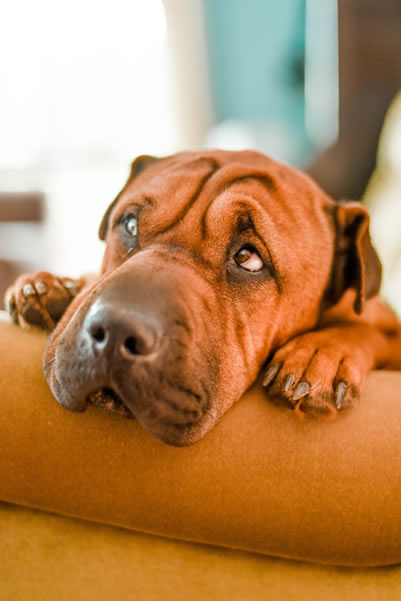We know that many people can suffer from a particular phobia. But have you ever wondered if dogs can have phobias. Pet owners know very well their affectionate behaviors and their manifestations of joy and gratitude. But we tend to ignore less visible behavior; that behavior originated by fears, threats and manias. For this reason, it is necessary to understand what phobias are; how they work in dogs and how to act on them.
In the realm of human psychiatry; phobia is defined as an overwhelming and irrational fear of objects or situations that pose no real danger to other people; (phobia of darkness, phobia being locked in a small space, etc.); but they provoke anxiety and avoidance behaviors in those who suffer from this phobia.
If a person can have an irrational behavior in the face of a phobia, the same happens with pets. That is, dogs can have phobias and present unsubstical behaviors and here we will explain in more detail what phobias consist of in dogs.
What are dog phobias?
Before we delve deeper into phobias in dogs; it’s important that we learn to differentiate when a dog has a natural fear and when a phobia is occurring. Below we present the definition of these two emotions:
• Fear, is something easily explainable, because it arises in the dog as a response dictated by his survival instinct to a situation that he considers threatening.
• Phobia, however, is an inordinate fear of situations that, objectively, do not represent a real threat. Several factors influence here, among which we can list having lived a negative experience under certain circumstances; genetic factors or a lack of early socialization.
How can we identify when a dog is experiencing fear or phobia? When a dog is afraid or phobia, it exhibits certain behaviors For example, the dog may be aggressive, destructive, hide behind furniture, bark intensely or even drool more than usual.
Types of phobias and fears that a dog may have.
The unknown and the allegedly threatening are two possible sources of phobia for the pet. However, not all animals of the same species react equally to the same stimulus. But there are some phobias that occur more commonly in dogs. Next, we will introduce you to the most well-known phobias in dogs.
• Noises.
There are certain noises that are not very common for your dog. For example the thunder of a storm, some household tools , and fireworks and these noises can cause a large percentage of fears. It is proven that one of the most feared objects by the dog is the noise of the domestic vacuum cleaner. The same can happen with the washing machine, dishwasher or dryer.

• The veterinarian.
If a person sometimes feels rejection for being in a doctor’s office. Your dog is much more likely to feel a great fear when he goes to the vet. Mainly, if during the previous visit, the dog was vaccinated or subjected to any inspection that has caused discomfort.
• Strangers.
Some dogs do not tolerate being around a stranger. Therefore, to avoid this problem, it is important to socialize the dog as a puppy. Since it is a risk to force an adult dog to approach a stranger.
• Loneliness.
There are dogs that do not tolerate being left alone at home. In some cases they show destructive behavior and bark too much, causing your neighbors to complain about your pet.
• The stairs.
There are dogs that approach with enormous slowness and caution to the rungs of a simple staircase. Others even remain paralyzed, as if an invisible barrier prevents them from moving forward. It is a fear that comes from their puppy stage, in which they surely did not climb or descend steps.
What to do if your dog has a phobia?
If the manifestations of fear in the dog are absolutely disproportionate, we will be the first to notice. And it will be time to take the animal to a veterinarian to advise us how to solve the problem and in case it needs therapy. In any case, we will never fall into despair or abuse, no matter how ridiculous their fear may seem to us. At all times, we must transmit peace and tranquility to the pet.
If fear or phobia does not trigger our alarms, we can try to correct these situations by slowly and progressively accustoming the dog to the situations that cause that stress. This process is slow and gradual and we should not subject the dog to unnecessary pressure, because we will further accentuate its imbalances.
Desensitization
also called controlled exposure, this technique works well for people and dogs. And it consists of gently introducing the element that disturbs the habits of the animal (for example noises) in such a way that the dog barely notices it at first. The strategies that owners can follow are very varied depending on the phobia that the dog feels. But always without hurry.
The same thing happens with visits to the veterinarian. We can take you to the consultation without necessarily having to be examined. Or in dealing with strangers, we can reward the animal with a stimulus, if it behaves well with a person it has never seen.
Finally, it is vitally important to avoid with dogs the technique known as the “flood”, which is to subject you daily to everything that scares you most with the purpose of getting used to it.
This strategy can work with people, but never with animals because they have no ability to rationalize the situation and discern.
With the above information we confirm that dogs can have phobias and how they can be treated.









Discussion about this post